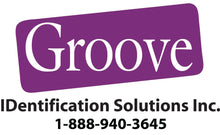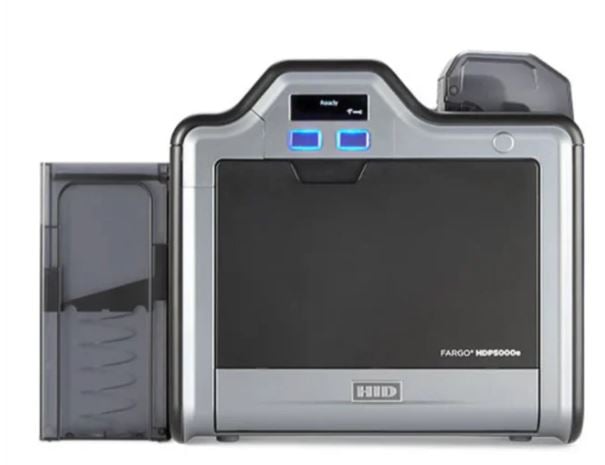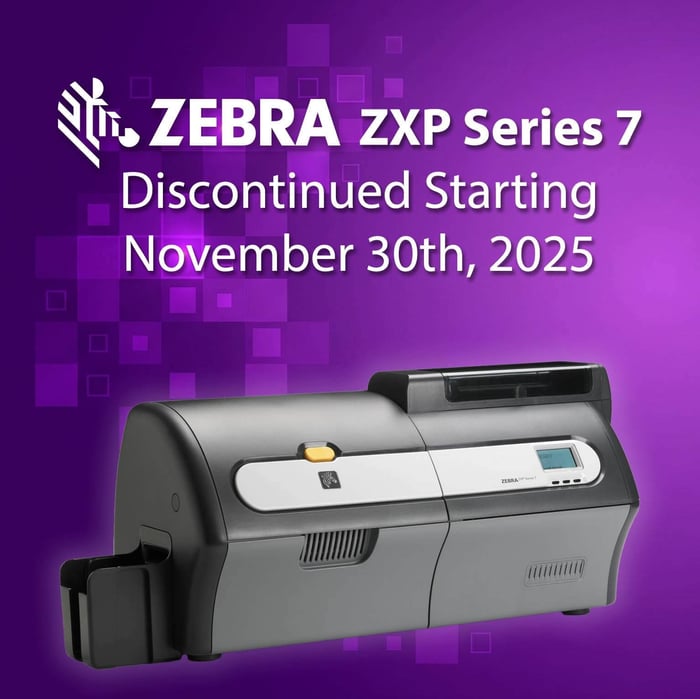Printing professional photo ID and access cards requires more than just any printer—it requires a high-quality Card Printer designed for durable, secure, and high-resolution output. At Groove Identification Solutions, we offer a wide range of Printers, from single-sided desktop models to industrial retransfer systems with lamination and security features.
In this comprehensive guide, we'll explore:
Single‑ vs. Dual‑sided options
Lamination for high‑wear applications
Direct‑to‑Card (DTC) vs Retransfer printing
Security holographic transfer film and laminates with retransfer models
How Card Printers work—technologies and best practices
Choosing the right printer from Groove’s lineup
Maintenance, cost, and workflow considerations
1. Single-Sided vs Dual-Sided Card Printers
A Card Printer can print on either one side (simplex) or both sides (duplex) of a card:
Single-Sided Card Printers are perfect for basic employee badges, membership IDs, and visitor passes. Groove offers models like the Fargo DTC1250e, Evolis Zenius, and Matica MC110.
Dual-Sided Card Printers double the functionality by printing front and back. Great for extra security elements or multi-purpose badges (e.g., employee photo on front, barcodes or access instructions on back). Groove’s lineup includes Fargo DTC4250e, Fargo DTC1500, Evolis Agilia, Matica MC310, Zebra ZC350, and Magicard 600.
Choosing between single or dual depends on your organization’s badge complexity and design needs.
2. Lamination for High-Wear Cards
For environments where cards endure frequent use—such as schools, hospitals, or manufacturing—Laminating Card Printers protect against wear, abrasion, fading, and tampering.
Groove offers lamination-equipped models:
Fargo HDP6600 (single or dual-sided laminating)
Fargo DTC4500e (dual-sided printing & lamination)
Matica ILM and MC-L laminate modules
Entrust SD460 lamination units
Laminates: Clear overlays or custom-coloured patches seal the card surface after printing, significantly increasing longevity in harsh conditions.
3. Direct-to-Card vs Retransfer Card Printers
Direct-to-Card (DTC) Printers
Dye-sublimation ribbons (YMCKO) are heated to transfer color to the PVC surface.
They’re affordable and ideal for simple designs but leave a slight white border (edge gap).
Common models: Fargo DTC1250e, Evolis Zenius, Matica MC110.
Retransfer Printers (Reverse-Transfer)
Print occurs onto a clear film; that film is bonded to the card edge-to-edge.
Ideal for high-resolution, uneven card surfaces with smart chips/RFID.
Offer true edge-to-edge printing and often include lamination and security features.
Common models: Matica MC660, Evolis Avansia, Fargo HDP5000e, Magicard Ultima Duo, Entrust CR805, and IDP WISE-CXD80DS.
Retransfer printing yields sharper images, better durability, and integration with security overlays.
4. Security: Holographic Transfer Film & Laminates
Retransfer and laminating Card Security Printers can apply security holographic overlays, a vital anti-counterfeit measure:
Holographic films (linear, microtext, custom logos) embed directly into the laminate layer.
These features are ideal for government, education, or financial IDs.
Laminates also protect printed elements, smart chips, and magnetic stripes from scratching or tampering.
Holographic overlays help organizations deter forgery and elevate card legitimacy.
5. How a Card Printer Works
A. Direct-to-Card Process
Insert a blank PVC card.
Printer feeder advances the card under the thermal print head.
Dye-sublimation ribbon passes in sync, melting color onto the card.
Optional overlay film seals the print.
The card ejects clean and final.
B. Retransfer Process
Card enters printer; image prints onto a PET film.
The film fuses to the card under heat and pressure.
Laminates or holographic overlays apply.
The card exits with edge-to-edge protection and flush surfaces.
Retransfer protects print heads from wear and delivers sharp output—even with chip bridges or uneven thickness.
6. Groove’s Card Printer Selection Guide
Single-Sided Options
Fargo DTC1250e – entry-level, reliable simplex printing
Evolis Zenius – compact and user-friendly
Matica MC110/MC210 – budget-friendly and durable
Dual-Sided Options
Fargo DTC4250e – Ethernet and high-capacity card input
Fargo DTC1500 – fast and efficient duplex printing
Evolis Primacy 2, Magicard 600, Matica MC310, Zebra ZC350 – for mid to high-volume usage
Retransfer & Laminating Options
Matica MC660, Evolis Agilia, Fargo HDP5000e, IDP WISE‑CXD80DS
Add-On Lamination
Fargo HDP6600, DTC4500e – internal lamination modules
Matica ILM and Entrust SD460 – standalone laminators for retrofitting
Each printer offers different benefits in terms of durability, card compatibility, and overall print quality.
7. Maintenance & Best Practices
Clean print heads regularly using Groove’s cleaning kits to avoid streaks or card jams.
Always use manufacturer-approved ribbons and cards to prevent damage.
Monitor card thickness and chip tolerances.
Schedule calibration scans for retransfer film alignment.
Keep your print environment dust-free to preserve printer longevity.
Preventive maintenance ensures consistent print quality and extends the lifespan of your Card Printer.
8. Cost & ROI Considerations
Initial Cost: DTC printers range from CAD 1,200–2,000; retransfer + laminate units range from CAD 4,000–7,500+.
Per-Card Cost: Includes ribbon, film, and laminate. Retransfer ~CAD 0.25–0.40; DTC ~CAD 0.15–0.30.
Durability: Laminated/retransfer cards last longer, saving on frequent reprints.
Security ROI: Holographic overlays and lamination reduce fraud, lower replacement costs, and improve compliance.
Balancing upfront investment with long-term use and card volume is key to maximizing ROI.
9. Security & Compliance
Holographic overlays help prevent unauthorized duplication.
Retransfer printing supports high-res security features across complex surfaces.
Many printers support magnetic stripe, RFID, and smart chip encoding.
Models like the Fargo HDP5000e also offer encryption and data protection.
If your organization requires high-security credentials, these features are must-haves.
10. Choosing the Right Card Printer
Ask yourself:
Do you need single- or dual-sided printing?
Will your cards face high use or environmental exposure?
Do you require advanced security or holographic overlays?
What is your card volume—low, mid, or high?
Will you use magnetic or smart card encoding?
Is edge-to-edge printing important for branding or visuals?
What’s your budget for printer, consumables, and maintenance?
Use these criteria to narrow down your selection and request a quote or demo from Groove.
Final Thoughts
A Card Printers is not just a piece of office equipment—it’s the foundation of your organization’s ID program. From basic ID badges to tamper-resistant credentials, the right Card Printer ensures durability, clarity, and security.
Whether you need a simple single-sided DTC unit or a retransfer printer with lamination and holographic overlays, Groove Identification Solutions offers the full spectrum of options.
Here’s a quick recap:
Single-sided DTC Printers: Best for simple badge programs
Dual-sided Printers: Perfect for front/back printing needs
Laminating Printers: Protect against wear and environmental damage
Retransfer Printers: Premium edge-to-edge quality, great for smart cards
Security Laminates: Fight forgery and improve card longevity
Call to Action
Need help selecting the right Card Printer for your organization?
Visit GrooveBadges.com or call 1‑888‑940‑3645. We offer:
Direct-to-Card and Retransfer Printers
Single- and Dual-Sided Models
Lamination and Holographic Security Options
Full Range of Printer Ribbons, Films, and Accessories
Expert Support and Advice from a Canadian HID Global Authorized Provider
Groove Identification Solutions is your partner in secure identification—backed by experience, product knowledge, and a commitment to quality.


